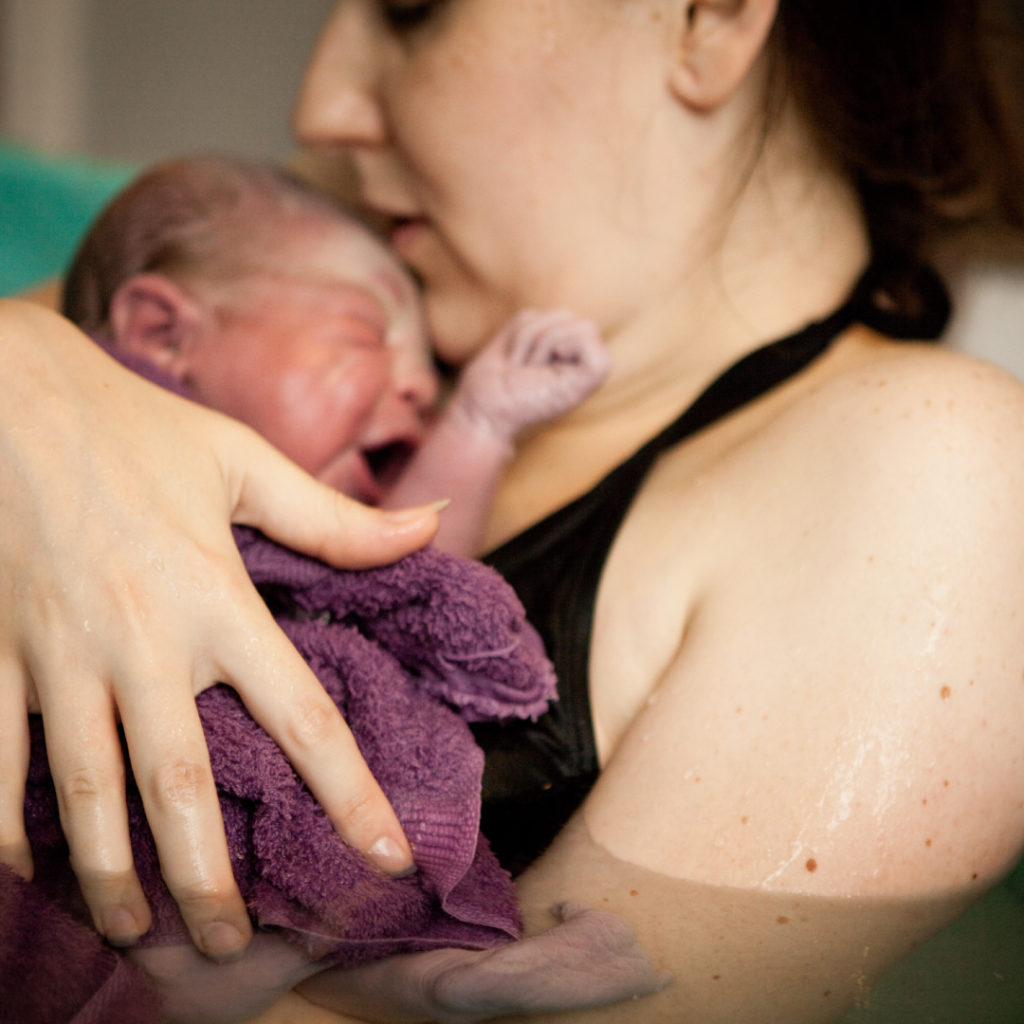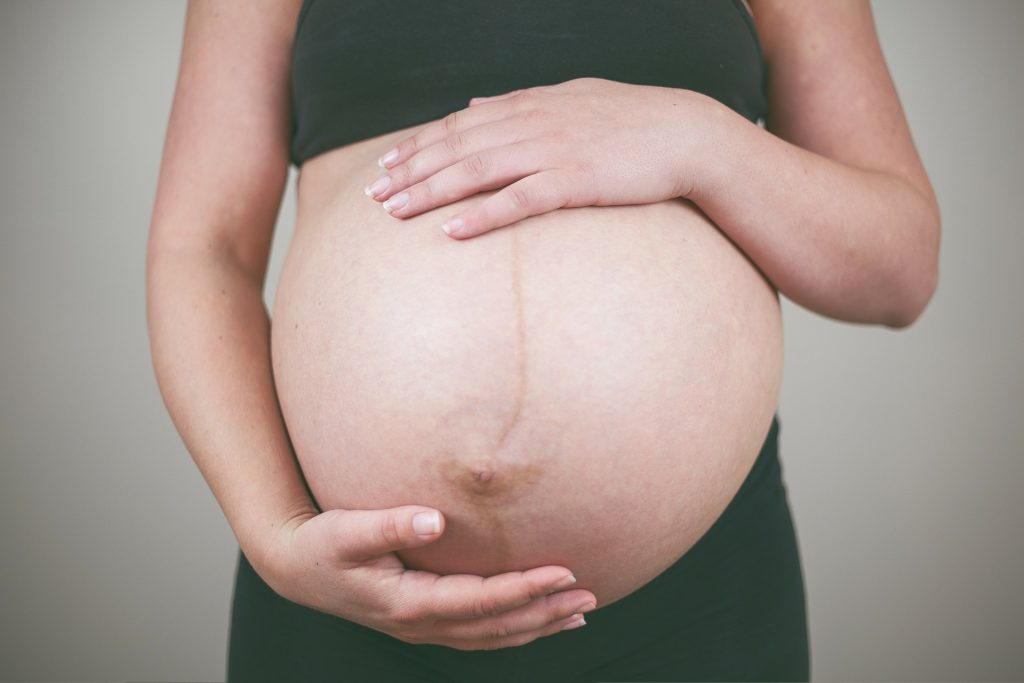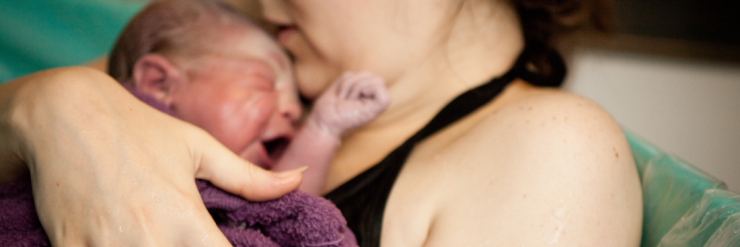We all know how wonderfully calming and relaxing a nice warm bath can be. It’s no wonder that many women choose to spend some or all of their birthing time in the water. Considering that your baby has been safely carried in a watery environment, a water birth might seem a perfect way to enter the world.
Before deciding whether to consider water birthing for your baby’s birth, it’s important to know what this practice entails and when it is safe for your baby to be born in water.
What is a water birth?

When a birthing parent spends part or all of their active labour and delivery in a birthing pool or large bathtub filled with warm water, this is known as a water birth. A water birth can take place at home or at a hospital that has a birthing pool. While some babies are delivered into the water, some parents, midwives, and doctors prefer babies be delivered out of the water. The process is sometimes called water immersion if only the first part of active labour takes place in the water, and a water birth when the second stage of active labour – the pushing and delivery – takes place in the pool and baby is born in the water.
How does the water birth process work?
Once you are in established labour, which means regular contractions of about one minute in length and about five minutes apart, you can get into the prepared birthing pool or bathtub. Getting into the warm water before this stage may slow your labour down and so it is not recommended. The temperature of the water in the pool is regulated to ensure you don’t overheat. During this period, the warm water supports your body and helps you to relax.
If you stay in the water during the second stage of active labour, the water will be maintained at a temperature similar to body temperature – around 36,5ºC – 37,5ºC. This is so that your baby has a smooth transition and that their gasp reflex is not stimulated while still submerged.
You can leave the water to use the bathroom, or to walk around for short periods. Your doctor or midwife may also ask you to get out of the water if they are concerned, or if they need to do a more thorough examination.
If you experience any problems or if there are any signs of foetal distress, you may need to leave the birthing pool or bathtub, and continue your labour and delivery out of the water.
What equipment is needed for water birthing?
If you have decided on a home water birth, this is what you will need:
- A suitable safe space that has enough room. Make sure that your midwife and partner can get you in and out of the tub or pool in an emergency.
- A rented portable birthing pool is preferable to your own bath –baths can be difficult to clean and bathrooms are often small.
- A pool liner (for the birthing pool or your bath).
- A net or strainer for scooping any solid material.
- A new hose long enough to stretch from your sink to the pool.
- An adapter to attach the hose to your hot and cold water.
- Sea salt and Epsom salts.
- A non-slip waterproof sheet to protect your floor.
- A water thermometer.
- Towels – lots of towels.
- Boiling water as a backup for keeping the water at the correct temperature.
Who can have a water birth?

If you’ve had an uncomplicated pregnancy, your baby is in a “head first” position, and you are over 37 weeks of gestation, you can consider water birthing.
If you’re at high-risk of complications or there are concerns about your baby’s health, you and your baby may need ongoing intensive monitoring during labour. This can be done more effectively out of water. If you have preeclampsia, gestational diabetes, an infection, or if your baby is premature or much larger than average a water birth is not recommended.
What are the benefits of water birthing?
During the first active stage of labour, the benefits of water immersion include:
- Decreased pain
- A shorter labour
- Improved feelings of relaxation and comfort
- Conservation of energy for the later stages of labour
If you decide to remain in the water during the second stage of active labour, you may experience:
- Reduced perineal trauma with a lower likelihood of an episiotomy.
What are the risks of having a water birth?
A water birth is not recommended if you are in preterm labour. If you have a fever, infection, vaginal bleeding, are over 35 or under 17-years old, or have any medical conditions that concern your doctor or midwife a water birth is not recommended. If you are given any medication that has a sedating effect you will also have to leave the water.
If you would like to have your baby born in water, there are a few risks that you should be aware of before proceeding:
- Meconium aspiration can happen when baby has their first bowel movement before birth and inhales the contaminated amniotic fluid. Clearing baby’s airway is a priority and this can be difficult in a water birth.
- Infection can occur if baby swallows water that is contaminated with faeces. (Yes, you may have a bowel movement while giving birth!)
- Any contamination from bacteria, faeces, or meconium may result in pneumonia.
- Legionnaires disease is a seious complication that can be caused by Legionella bacteria.
- The umbilical cord can tear, leading to foetal blood loss.
- Vaginal tearing or excessive bleeding directly after birth may not be immediately noticed.
To reduce these dangers, many doctors and midwives recommend getting out of the birthing pool for the final stage of the birth. Being out of the water also means that faster action can be taken if the need for an emergency caesarean arises!
Many parents include hypnobirthing practices into their water birthing experience which can further decrease pain and reduce the fears and stresses you may experience while giving birth…
More birth related articles? Read here about hypnobirthing!






Add comment